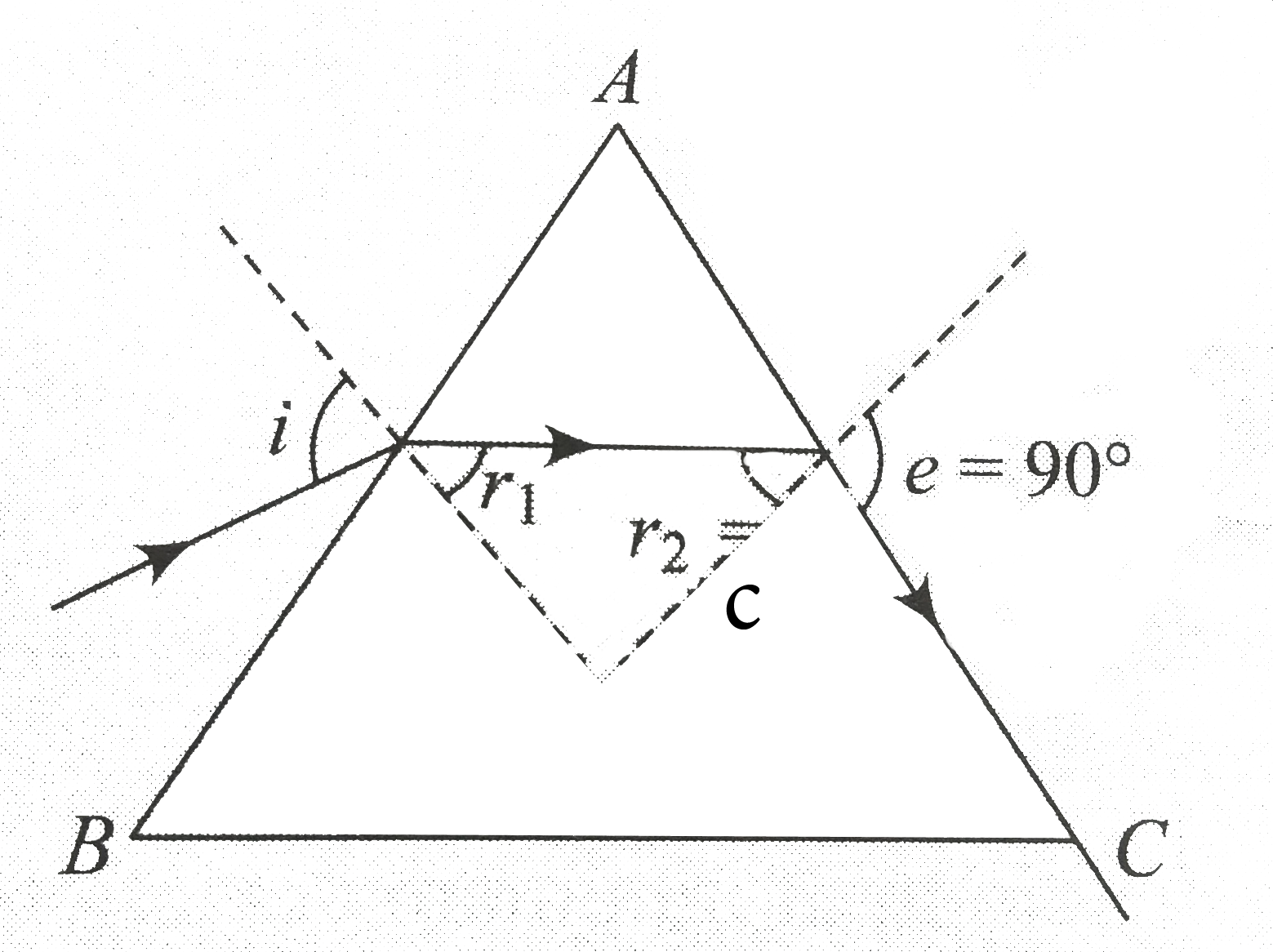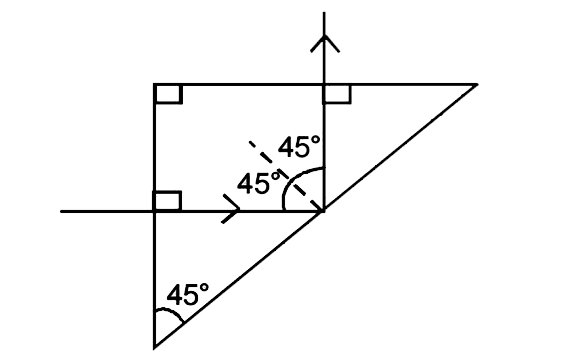In an experiment for determination of refractive index of glass of a prism by i−δ, plot it was found thata ray incident at angle 35∘, suffers a deviation of 40∘ and that it emerges at angle 79∘. In that case which of the following is closest to the maximum possible value of the refractive index?
1.7
1.8
1.5
1.6
The correct Answer is:C
We know that i+e−A=δ
35∘+79∘−A=40∘ ∵A=74^circ<br>Butmu=(sin((A+delta_m)/(2)))/((sinA/(2)))=(sin((74+delta_m)/(2)))/(sin((74)/(2)))<br>=(5)/(3)sin(37^circ+(delta_m)/(2))<br>mu_(max)canbe(5)/(3).Tˆismu_(max)is≤ssthan(5)/(3)=1.67<br>Butdelta_mwillbe≤ssthan40^circso<br>mult(5)/(33)sin57^circlt(5)/(3)sin60^circimpliesmu=1.45
Topper's Solved these Questions
Similar Questions
In an experiment for determination of refractive index of glass of a prism by i −δ plot, it was found that a ray incident at angle 30∘, suffers a deviation of 14∘ and that it emerges at angle 44∘. Given that case, the refractive index, μ<x. What is the minimum value of x? (Take tan 37∘= 0.75)
View SolutionIn an experiment to find refractive index of a prism it was found that the minimum deviation was 30∘. What is the refractive index if angle of prism is also 30∘.
View Solution
Knowledge Check
In an experiment for determination of refractive index of glass of a prism by i -δ ,plot, it was found that a ray incident at angle 35∘ , suffers a deviation of 40∘ and that it emerges an angle 79∘ . In that case which of the following is closest to the maximum possible value of the refractive index?
A1.5B1.6C1.7D1.8A prism of refractive index √2 has a refracting angle of 60∘. At what angle must a ray incident on it so that it suffers minimum deviation ?
A30∘B45∘C60∘D75∘The angle of a prism is 30∘. The rays incident at 60∘ on one refracting face suffer a deviation of 30∘. Then the angle of emergence is :
A0∘B30∘C60∘D90∘
What should be the minimum value of refractive index of a prism, refracting angle A, so that there is no emergent ray irrespective of the angle of incidence?

View SolutionA light ray is incident perpendicularly to one face of a 90∘ prism and is totally internally reflected at the glass-air interface. If the angle of reflection is 45∘, we conclude that the refractive index n

View SolutionA ray incident a 15∘ on one refracting surface of a prism of angle 60∘ , suffers a deviation of 55∘ . What is the angle of emergence
View SolutionLight rays from a source are incident on a glass prism of index of refraction μ and angle of prism α At near normal incidence, the angle of deviation of the emerging rays is
View SolutionWhat should be the minimum value of refractive index of a prism of refractive angle A, so that there is no emergent ray irrespective of angle of incidence?
View Solution
